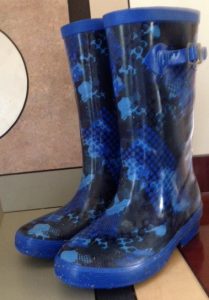
The planners plan every detail of their fiction before they start; the flying-by-the-seat-of-their-pants pantsers open a blank document and take off. I always begin with a main character and vague plot and let my imagination, linguistic bank, and blind chance control the ensuing human sufferings and triumphs. Some of my current projects involve speculative fiction, and that requires sufficient scientific knowledge to mimic feasibility. How to go about it? In my case, I contacted a professor involved in evolutionary biology and plan to inveigle her, in due course, into evaluating/correcting my vision.
For a couple of years, I’ve been researching epigenetics (the biochemical operation of our cells instantiated, in large part, by our environmental and social experiences). Some research was preliminary; some is ongoing. The material for working out how cellular biology will shape my characters and plots has included: The Epigenetics Revolution by Nessa Carey (2012); Epigenetics: How Environment Shapes our Genes by Richard C. Francis (2011); and The Developing Genome by David S. Moore (2015). Websites and news reports, notably the recent return of astronaut Scott Kelly to discover than his epigenome had changed a hefty 7% from that of his identical twin, keep me up to date.
So, what are research wellies? They are the magical boots that allow a writer to leap a thousand leagues over the heads of experts. Once shod, I acquire articles and books. I prefer to buy used books that I can mark with stars, underlining, and comments. Once marked up, I transfer pertinent information to a notepad, with page numbers listed for tricky concepts and definitions written in full.
Often, I find inspiration for my fictional worlds in the scientists’ research: imagine contagious cancer; the reproductive effects of environmental chemicals; the inheritance of parentally- imprinted disease; and even the lifelong effects of good parenting in rats. It helps to love research.
When I wrote academic papers, I always consulted dozens of sources. I also loved genetics from the moment I came across it in undergraduate biology, and epigenetics, which affects an individual in terms of health, behavior, and phenotype, turns out to be gratifyingly mind-blowing. What’s more the language is delightfully arcane: epigenome, methylation, exon, intron, histone deacetylation, X-inactivation, and so on. Stay tuned for the actual stories … and please ask questions or leave comments!